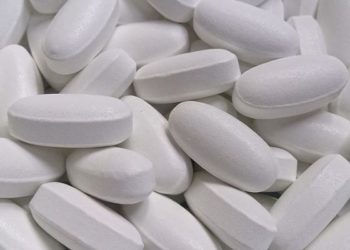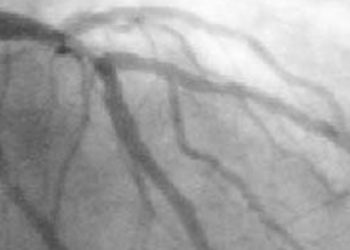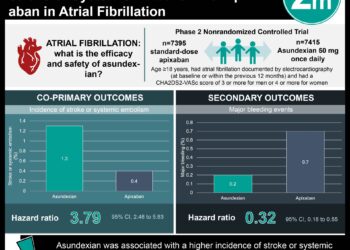2 Minute Medicine Rewind April 8, 2024
2. Patients randomized to receive and addition of sitagliptin to insulin therapy provided non-critically ill hospitalized patients with type 2 diabetes (T2DM) better glycemic control and higher mean daily glucose level reductions compared to those with insulin-only therapy.
Evidence Rating Level: 1 (Excellent)
In the management of non-critically ill hospitalized patients with T2DM, achieving optimal glycemic control without increasing the risk of hypoglycemia remains a challenge. Traditional insulin therapy, while effective, requires careful monitoring and dose adjustments. Recent advances have introduced oral dipeptidyl peptidase-4 (DPP-4) inhibitors, such as sitagliptin, which offer a promising adjunct to insulin therapy by enhancing glucose-dependent insulin secretion and suppressing glucagon release. This open-label, randomized clinical trial was designed to evaluate the efficacy and safety of this combination therapy of basal insulin with sitagliptin in non-critically ill hospitalized patients with type 2 diabetes (T2DM). Primary outcomes assessed included glycemic control, measured by the change in daily blood glucose levels, and the incidence of hypoglycemic events. Two-hundred participants (64% men, mean age 60 years) were randomly assigned to either the sitagliptin plus insulin group (n = 100) or the insulin-alone group (n = 100). Over the treatment period, patients receiving sitagliptin with insulin achieved significantly better glycemic control compared to those receiving insulin alone, with a mean daily blood glucose reduction of -36 mg/dL (95% CI, -42 to -30 mg/dL; p < .001) versus -18 mg/dL (95% CI, -24 to -12 mg/dL; p < .001), respectively. The experimental group also saw a lower mean daily blood glucose level (158.8 vs 175.0 mg/dl, p = .014) and a higher percentage of readings within the target range of 70-180 mg/dL (75.9% vs 64.7%, p < .001) without requiring as many basal or supplementary insulin doses. The rate of hypoglycemia was comparable between the two groups, indicating that the addition of sitagliptin to insulin was a safe and viable alternative. This trial overall demonstrates that the addition of sitagliptin to a basal-plus insulin regimen results in superior glycemic control and a lower risk of hypoglycemia compared to insulin therapy alone, which has implications for patients admitted to hospital with concurrent T2DM.
1. In this experimental trial, supplementation with whey protein in a high-fat high-fructose (HFHF) diet was found to be associated with lower abdominal circumference, less liver damage on histological studies, and increased occludin expression in the colon and small intestines.
Evidence Rating Level: 2 (Good)
The increasing prevalence of diet-induced liver damage, more specifically non-alcoholic fatty liver disease (NAFLD), underscores the need for dietary strategies that can prevent or mitigate the effects of the condition. The intestinal microbiota is thought to be associated with the development of NAFLD (via the ‘gut-liver axis’) and whey proteins, a dairy byproduct from cheese production, are rich in bioactive peptides that are thought to exert anti-inflammatory and antioxidant effects. This study investigates the potential of whey protein supplementation to reduce liver damage in rats subjected to a high fat-high fructose (HFHF) diet, a known inducer of metabolic syndrome and NAFLD. This was tested by analyzing the expression of hepatic TLR-4 (toll-like receptor), which initiates inflammatory processes, and intestinal occludin, which has decreased expression in NAFLD patients. Conducted as a controlled laboratory experiment, the research involved dividing rats into groups receiving either a standard diet, a HFHF diet, or a HFHF diet supplemented with whey protein (WPI). The duration of the study spanned 12 weeks, aiming to simulate the development of diet-induced liver damage and evaluate the protective effects of whey protein. Liver damage scores were assessed through histological examination, measuring steatosis, inflammation, and fibrosis, alongside biochemical markers of liver function (ALT, AST, and ALP enzymes). The study comprised 60 male rats, with outcomes measured at the study’s conclusion. Body weight at the end of the study was not significantly different between the HFHF WPI group and controls (p > .05). However, overall abdominal circumference was found to be significantly lower in the HPHP WPI group compared to the HFHF diet alone group (p < .001). C-reactive protein (CRP) levels were not affected by WPI supplementation, but total liver damage scores (an aggregate of criteria on histological exam from tissue samples) were lower in the HFHF WPI group compared to the HFHF only group (p < .001). Occludin expression was significantly higher in the WPI groups compared to the HFHF and control diet groups (p < .001). Overall, this studies findings adds to the growing body of evidence supporting the beneficial effects of whey protein in the context of diet-induced metabolic disorders, highlighting the potential for dietary supplements to play a role in preventing or reducing liver damage associated with poor dietary habits. Future studies could further explore the mechanisms behind whey protein’s protective effects and assess its efficacy in humans. The study underscores the importance of dietary choices in managing and preventing NAFLD and related metabolic disorders, suggesting that whey protein supplementation could be a valuable component of dietary strategies aimed at improving liver health.
1. Postoperative complications in colorectal patients older than 80 years of age were associated with significantly lower overall and cancer-specific survival.
Evidence Rating Level: 2 (Good)
Severe postoperative complications are a significant concern in the surgical treatment of colorectal cancer, especially among older patients, due to their potential impact on prognosis and overall survival. This retrospective cohort study investigated the association between severe postoperative complications and the long-term outcomes in older patients undergoing colorectal cancer surgery. Criteria for inclusion in the study were age (65 and older) and diagnosis of colorectal cancer with surgical intervention. Severe postoperative complications were categorized according to the Clavien-Dindo classification. The study tracked outcomes including postoperative mortality, long-term survival, and recurrence rates. A total of 746 patients were included in the analysis (51% male; mean age 72 years, range [65 to 89]), with a median follow-up period of 5 years. The findings revealed that severe postoperative complications did not differ significantly between the groups, with 32% of patients experiencing severe complications. This did result in a significantly worse cancer-specific survival for older patients (≥ 80 years) that had severe complications compared to those who did not (p = .007), whereas younger age did not yield this difference in survival. Specifically, the presence of severe complications correlated with a decrease in overall survival by 22% and an increase in cancer recurrence rates by 15%, and were independent prognosticators for cancer-specific survival and overall survival in the older (≥80 years) patients (HR = 4.0, 95% CI: 1.27–12.6, p = 0.017). In addition to this, deep tumor invasion, rectal cancer, lymph node metastasis, and high American Society of Anaesthesiologists (ASA) physical status scores were prognostic factors for overall survival among all patients (ps < .05). This retrospective study underscores the significant impact of severe postoperative complications on the prognosis of older patients with colorectal cancer. It suggests that minimizing the risk of such complications should be a priority in the surgical management of this population. Further research exploring strategies for reducing postoperative complications oncologic surgery for colorectal cancer patients is warranted.
1. Behavioural inhibition, a temperamental predictor of anxiety disorders, was found to be inversely associated with thalamic, cerebral white matter, and putamen brain tissue volume.
2. Children with anxiety disorders were found to have smaller total cortical, amygdala, and precentral gyrus brain volumes.
Evidence Rating Level: 2 (Good)
Anxiety disorders are the most chronic and prevalent class of psychiatric disorder diagnosed over the lifespan, and increase the risk for subsequent psychiatric comorbidities if left untreated. One method by which early detection is through the understanding of the pathophysiology of anxiety disorders and structural brain characteristics. Behavioural inhibition (BI), a childhood tendency for high avoidance of novel stimuli, is a key temperamental predictor of anxiety disorders. This study examined the relationship between brain volumes, behavioural inhibition, and the prevalence of anxiety disorders utilizing data from the Adolescent Brain Cognitive Development Study, the largest long-term study of brain development and child health in the United States where participants were systematically evaluated for behavioural inhibition and diagnosed with anxiety disorders through clinical interviews and behavioural assessments. Brain volumes were quantified using magnetic resonance imaging (MRI). A total of 9,353 participants were included in the study (52% males, mean [SD] age 9.9 [0.62] years), with a follow-up period of 2 years to monitor the onset and progression of anxiety disorders. Among them, 2.66% of participants had a current anxiety disorder and 14.08% had a previous anxiety disorder diagnosis. Lower BI scores were associated with larger thalamic volume (β = -0.168; 95% CI [-0.291; -0.044]), larger cerebral white matter volume (β = -0.152; 95% CI [-0.281; -0.023]), and larger putamen volume (β = -0.089; 95% CI [-0.183;0.005]). In contrast, larger hippocampal volume was associated with higher BI scores (β = 0.094; 95% CI [-0.008;0.196]). Those with current anxiety disorders demonstrated significantly smaller total cortex (OR = 0.751; 95% CI [0.580;0.970]), amygdala (OR = 0.798; 95%CI [0.666;0.956]), and precentral gyrus (OR = 0.802; 95% CI [0.661;0.973]) volumes compared to healthy controls. Those with past anxiety disorders had smaller total white matter and amygdala volumes. Overall, these findings demonstrate that anxiety disorders and temperamental factors such as BI have neuroanatomical correlates in children, but did not demonstrate overlap, suggesting potentially divergent neurobiological pathways underlying BI and anxiety disorders rather than a common neurobiological pathway. Findings also reflect potential effects of past anxiety on brain development. Longitudinal studies that extend past childhood should be undertaken to examine at what point BI and anxiety intersect and causal relationships that could steer early intervention programs for children and adolescents.
1 This randomized crossover trial found that post-COVID condition (PCC) patients tolerated and responded well to three different exercise trials without excessive exacerbation of troublesome symptoms.
2. PCC patients were also found to have lower peak volume of oxygen consumption (VO2 peak) levels than health controls, and several showed signs of myopathies or orthostatic tachycardia.
Evidence Rating Level: 1 (Excellent)
PCC, characterized by persistent symptoms and functional limitations after acute infection with SARS-CoV-2, presents significant rehabilitation challenges and has been found in 10-20% of individuals who have had COVID-19. This prospective randomized crossover clinical trial focused on evaluating the efficacy of a tailored exercise rehabilitation program in improving exercise tolerance and reducing functional limitations in patients with PCC. Sixty-two participants were selected for a randomized crossover clinical trial (N= 62, 76% women, mean [SD] age 47.0 [9.4] years), with 31 patients exhibiting PCC and 31 sex- and age-matched healthy controls. The study defined functional limitations through standardized physical performance tests and exercise intolerance through cardiopulmonary exercise testing (CPET). The intervention comprised of a randomized order of 3 exercise trials (high-intensity interval training [HIIT], strength training [ST], and medium-intensity continuous training [MICT]). There was no difference in fatigue worsening between patients with PCC and controls after any of the exercise types (p > .05). However, PCC participants noted that after HIIT, they reported significantly more muscle pain and joint pain than their healthy counterparts (p < .05). Within two days of ST sessions, PCC patients reported greater increase in muscle soreness (p <.001). Within two days of MICT, PCC patients were reporting decreased concentration levels (p < .05) compared to controls. Overall, patients tolerated exercise trials, but PCC patients had a 21% lower peak volume of oxygen consumption (VO2 peak; mean difference: −6.8 mL/kg/min; 95% CI, −10.7 to −2.9 mL/kg/min; P < .001) and decreased muscle strength (mean difference: −37 Nm; 95% CI, −67 to −7 Nm; P = .02) compared to controls. Interestingly, neurophysiologic testing revealed that 62% of PCC patients showed signs of myopathy, and 13% had postural orthostatic tachycardia. Patient-reported outcomes indicated a higher satisfaction with health status and a reduction in symptoms like fatigue and dyspnea post-rehabilitation. No adverse events were associated with the exercise program, highlighting its safety for this patient population. Lactate levels post-exercise did not differ between the groups. Future studies should investigate the long-term sustainability of these benefits and explore the effectiveness of such interventions across patient populations affected by COVID-19 to validate and expand upon these findings.
Image: PD
©2024 2 Minute Medicine, Inc. All rights reserved. No works may be reproduced without expressed written consent from 2 Minute Medicine, Inc. Inquire about licensing here. No article should be construed as medical advice and is not intended as such by the authors or by 2 Minute Medicine, Inc.







